The Cincinnati Reds are a professional baseball team based in Cincinnati, Ohio. They compete in Major League Baseball (MLB) as part of the National League (NL) Central Division. The Reds were a founding member of the American Association in 1881 before joining the National League in 1890.
1900: First Meeting Between Pirates and Reds
During the 1900 MLB season, the Cincinnati Reds and Pittsburgh Pirates met for the first time, dating far back into the infancy of MLB after both being founded in the 1880s.
1901: Reds Move to Palace of the Fans
In 1901, the Reds moved to the Palace of the Fans, which served as their home until 1912.
1905: Cy Seymour Wins Batting Crown
In 1905, Cy Seymour achieved a .377 average, becoming the first Cincinnati Reds player to win an individual batting crown.
1911: Bob Bescher Steals 81 Bases
In 1911, Bob Bescher stole 81 bases, setting a Cincinnati Reds team record that still stands.
1912: Reds Played at Crosley Field Since 1912
In 1912, The Reds have played at Crosley Field since 1912.
1912: Redland Field Opens
In 1912, the Cincinnati Reds opened Redland Field, a new steel-and-concrete ballpark.
1912: Reds Move to Crosley Field
In 1912, the Cincinnati Reds relocated to Crosley Field, which would be their home for 58 years and see two World Series titles.
1918: Reds Finish Fourth
In 1918, the Cincinnati Reds finished fourth in their league.
1919: Reds Win NL Pennant and World Series
In 1919, managed by Pat Moran, the Cincinnati Reds won the National League pennant and subsequently won the World Series against the Chicago White Sox in eight games.
1920: "Black Sox" Scandal Taints Championship
By 1920, the "Black Sox" scandal cast a shadow over the Cincinnati Reds' recent championship win.
1926: Reds Become Second Division Dwellers
After 1926, the Cincinnati Reds consistently ranked in the second division.
1931: Team Bankrupt, Redland Field in Disrepair
By 1931, the Cincinnati Reds faced bankruptcy, coinciding with the Great Depression and the deteriorating condition of Redland Field.
1933: Powel Crosley Jr. Buys the Reds
In 1933, Powel Crosley, Jr., purchased the Cincinnati Reds out of bankruptcy and hired Larry MacPhail as the general manager.
1934: Redland Field Renamed Crosley Field
In 1934, Redland Field was renamed Crosley Field.
1935: First Night Game and Fireworks at Crosley Field
In 1935, Crosley Field hosted the first night game in baseball history, which also featured the first baseball fireworks night.
1938: Johnny Vander Meer's Back-to-Back No-Hitters and Ernie Lombardi's MVP Award
In 1938, Johnny Vander Meer became the only pitcher in major league history to throw back-to-back no-hitters, and Ernie Lombardi was named the National League's Most Valuable Player.
1938: Hosted MLB All-Star Game at Crosley Field
In 1938, the Cincinnati Reds hosted the Major League Baseball All-Star Game at Crosley Field.
1939: Reds Win NL Championship, Lose World Series
In 1939, the Cincinnati Reds won the National League championship but were swept by the New York Yankees in the World Series.
1940: Reds Win World Series
In 1940, the Cincinnati Reds repeated as National League champions and won the World Series, defeating the Detroit Tigers 4 games to 3, with Frank McCormick named the NL MVP.
1944: Joe Nuxhall Pitches at Age 15
In 1944, Joe Nuxhall pitched for the Cincinnati Reds at the age of 15, becoming the youngest player ever to appear in a major league game.
1948: WLWT Begins Carrying Reds Games
In 1948, NBC affiliate WLWT began carrying Cincinnati Reds games.
April 1953: Reds Preference to be Called 'Redlegs'
In April 1953, during a period of anti-Communism sentiment, the Cincinnati Reds announced their preference to be called the 'Redlegs' to avoid political connotations.
1953: Hosted MLB All-Star Game at Crosley Field
In 1953, the Cincinnati Reds hosted the Major League Baseball All-Star Game at Crosley Field.
1954: Ted Kluszewski Leads NL in Home Runs
In 1954, Ted Kluszewski led the National League in home runs.
1956: Logo Altered and Term "REDS" Removed
From 1956, the Cincinnati Reds' logo was altered to remove the term "REDS" from the inside of the "wishbone C" symbol.
1956: Reds Introduce Sleeveless Jerseys
In 1956, following the renaming of the team, the Cincinnati Reds introduced sleeveless jerseys, a rare design in Major League Baseball at the time. The uniforms featured a red cap with a white "C", and the road uniforms included the Mr. Redlegs logo.
1956: Redlegs Tie NL Home Run Record
In 1956, the Cincinnati Redlegs, led by Frank Robinson, tied the National League record by hitting 221 home runs.
1959: Team Reverts to Name "Reds"
In 1959, the Cincinnati Redlegs reverted to using the name "Reds".
1960: Logo still altered and term 'REDS' Removed
In 1960, the Cincinnati Reds' logo was still altered to remove the term "REDS" from the inside of the "wishbone C" symbol.
1961: Robinson Joined by Pinson, Post, Coleman, and Freese
In 1961, Frank Robinson was joined by Vada Pinson, Wally Post, Gordy Coleman, and Gene Freese.
1961: Reds Change Uniforms with Oval "C" Logo
In 1961, the Cincinnati Reds altered their uniforms, replacing the traditional wishbone "C" with an oval-shaped "C" logo while continuing to use sleeveless jerseys.
1961: Reds Capture NL Pennant, Lose World Series
In 1961, the Cincinnati Reds captured the National League pennant, defeating the Los Angeles Dodgers and San Francisco Giants, but were defeated by the New York Yankees in the World Series.
1961: "REDS" Reappears on Uniforms
In 1961, the word "REDS" reappeared on the Cincinnati Reds' uniforms, but the point of the "C" was removed.
1962: Reds Win 98 Games, Finish Third
In 1962, the Cincinnati Reds won 98 games, led by Bob Purkey's 23 wins, but finished third in the league.
1963: Pete Rose plays almost every position
Since 1963, Pete Rose had played almost every position for the Cincinnati Reds except pitcher, shortstop, and catcher.
1964: Players' Last Names Added to Uniforms
In 1964, the Cincinnati Reds added players' last names to the back of each set of uniforms, below the numbers.
1964: Reds Lose Pennant by One Game; Fred Hutchinson Dies
In 1964, the Cincinnati Reds lost the pennant by one game to the St. Louis Cardinals after the Philadelphia Phillies collapsed, and manager Fred Hutchinson died of cancer weeks later.
1965: Frank Robinson Traded to Baltimore Orioles
After the 1965 season, owner Bill DeWitt traded Frank Robinson to the Baltimore Orioles for Milt Pappas, Jack Baldschun, and Dick Simpson in what is remembered as a lopsided trade.
1966: Uniforms with Last Names Scrapped
After the 1966 season, the Cincinnati Reds scrapped the uniforms that included players' last names on the back.
1966: Robinson Wins MVP and Triple Crown
In 1966, Frank Robinson won the MVP and Triple Crown in the American League, leading the Baltimore Orioles to their first World Series title after being traded from the Reds.
1967: Howsam Appointed General Manager
In 1967, Bob Howsam was appointed as the general manager of the Cincinnati Reds.
1967: Joe Nuxhall Begins Career in Reds' Booth
In 1967, Joe Nuxhall began his career in the Cincinnati Reds' broadcast booth, the year after his retirement as an active player. He remained until his death in 2007.
1967: Traditional Home Uniform Logo Reinstated
In 1967, the Cincinnati Reds reinstated their traditional home uniform logo.
1967: Reds Restore Wishbone "C" Insignia
In 1967, the Cincinnati Reds restored the point to the "C" insignia, returning it to a wishbone shape. They wore pinstriped home uniforms only in 1967.
1969: WLW Becomes Reds' Flagship Radio Station
In 1969, WLW, 700AM became the Cincinnati Reds' flagship radio station.
1969: Reds Join NL West Division
In 1969, the Cincinnati Reds became part of the National League West division.
June 24, 1970: Final Game at Crosley Field
On June 24, 1970, the Cincinnati Reds played their final game at Crosley Field, securing a 5–4 victory over the San Francisco Giants.
June 30, 1970: Move to Riverfront Stadium
The Cincinnati Reds moved into Riverfront Stadium on June 30, 1970, a new 52,000-seat multi-purpose venue, continuing the season by winning 70 of their first 100 games.
1970: Reds and Pirates meet during the NLCS
In 1970, the Cincinnati Reds and Pittsburgh Pirates met during the NLCS (National League Championship Series).
1970: Hosted MLB All-Star Game at Riverfront Stadium
In 1970, the Cincinnati Reds hosted the Major League Baseball All-Star Game at Riverfront Stadium.
1970: Start of Intense Dodgers-Reds Rivalry
In 1970, the Dodgers–Reds rivalry began to intensify and would be considered one of the most intense during the 1970s through the early 1990s.
1970: Reds Beat Pirates to win Pennant
In 1970, the Reds beat the Pittsburgh Pirates to win the National League pennant, marking the beginning of their rivalry with Pennsylvania-based clubs.
1971: Reds Trade for Joe Morgan and Acquire George Foster
In 1971, after a disastrous season, the Cincinnati Reds traded for Joe Morgan, César Gerónimo, Jack Billingham, Ed Armbrister and Denis Menke. George Foster was also acquired via trade that year.
1971: Transition from Flannel to Double-Knit Uniforms
The Reds shifted from flannel uniforms through 1971 to double-knit uniforms with pullover jerseys and belt-less pants in 1972.
1972: Reds and Pirates meet during the NLCS
In 1972, the Cincinnati Reds and Pittsburgh Pirates met during the NLCS (National League Championship Series).
1972: Pullover Jerseys and Belt-less Pants Uniforms
In 1972, the Cincinnati Reds changed to double-knits with pullover jerseys and belt-less pants.
1972: New Reds Logo Featuring Mr. Redlegs Introduced in 1972
In 1972, the Cincinnati Reds introduced a new logo featuring their mascot, Mr. Redlegs, inside the wishbone "C," replacing the script "REDS."
1972: Reds Win NL West, Lose World Series
In 1972, the Cincinnati Reds won the NL West and defeated the Pittsburgh Pirates in the playoffs but lost the World Series to the Oakland Athletics in seven games.
1972: Reds Beat Pirates to win Pennant
In 1972, the Reds beat the Pittsburgh Pirates to win the National League pennant.
1973: Reds win NL West, Pete Rose/Bud Harrelson scuffle
In 1973, the Cincinnati Reds won their third National League West crown after a comeback, overcoming a 10+1⁄2 game deficit against the Los Angeles Dodgers post All-Star break. They however lost the NL pennant to the New York Mets in five games in the NLCS. During Game 3, a scuffle between Pete Rose and Bud Harrelson led to a bench-clearing fight.
1974: Hank Aaron Ties Babe Ruth's Home Run Record
In 1974, Hank Aaron tied Babe Ruth's record of 714 home runs off Jack Billingham during the opening day game between the Atlanta Braves and the Cincinnati Reds. Commissioner Bowie Kuhn intervened to ensure Aaron played the following day. Marty Brennaman also debuted as a Hall of Fame radio announcer for the Reds in 1974.
1974: Marty Brennaman Begins Calling Reds Games
In 1974, Marty Brennaman began calling Cincinnati Reds games, most famously alongside former Reds pitcher and color commentator Joe Nuxhall through 2007.
1974: Marty Brennaman's First Season
Marty Brennaman's first season with the Cincinnati Reds was in 1974.
1975: Concepcion, Foster and Griffey retain their spots
By the 1981 season, only Dave Concepción, George Foster, and Ken Griffey retained their starting positions from the 1975 Big Red Machine era.
1975: "Great Eight" Starting Team solidified, Rose Moved to third base
In 1975, the Big Red Machine lineup solidified with the "Great Eight", including Johnny Bench, Tony Pérez, Joe Morgan, Dave Concepción, Pete Rose, Ken Griffey, César Gerónimo, and George Foster. Sparky Anderson moved Pete Rose to third base and inserted Foster in left field, which propelled the Reds into first place.
1975: Reds and Pirates meet during the NLCS
In 1975, the Cincinnati Reds and Pittsburgh Pirates met during the NLCS (National League Championship Series).
1975: Reds win the World Series
In 1975, the Cincinnati Reds clinched the NL West with 108 victories and swept the Pittsburgh Pirates to win the NL pennant. They then faced the Boston Red Sox in the World Series, winning in seven games after a dramatic Game 6 and Game 7, securing their first championship in 35 years.
1975: Reds Beat Pirates to win Pennant
In 1975, the Reds beat the Pittsburgh Pirates to win the National League pennant.
1976: Tony Perez traded, Big Red Machine breaks up
After the 1976 season, Tony Pérez was traded to the Montreal Expos, breaking up the Big Red Machine's starting lineup, a move later regretted by manager Sparky Anderson and general manager Bob Howsam.
1976: Pitching staff turnover
By 1979, the Reds' pitching staff experienced a complete turnover since 1976, except for Fred Norman.
1976: Reds Win 1976 World Series
In 1976, the Cincinnati Reds secured another World Series victory, solidifying their reputation as a dominant team.
1976: Reds Beat Phillies to win Pennant
In 1976, the Reds beat the Philadelphia Phillies to win the National League pennant.
1976: Reds Sweep the Yankees in the World Series
In 1976, the Reds won the NL West and swept the Philadelphia Phillies in the NLCS to advance to the World Series, where they swept the New York Yankees at Yankee Stadium. This marked their second consecutive World Series championship.
June 15, 1977: Tom Seaver acquired from Mets
On June 15, 1977, the Cincinnati Reds acquired pitcher Tom Seaver from the New York Mets in exchange for Pat Zachry, Doug Flynn, Steve Henderson, and Dan Norman.
June 16, 1978: Tom Seaver No-Hitter
On June 16, 1978, Tom Seaver pitched the only no-hitter of his Hall of Fame career against the St. Louis Cardinals.
1978: Anderson fired, Rose signs with Philadelphia
After the 1978 season, manager Sparky Anderson was fired, and Pete Rose signed with Philadelphia as a free agent.
1979: George Grande Hosts First SportsCenter
In 1979, George Grande, who hosted the first SportsCenter on ESPN, was the play-by-play announcer for the Cincinnati Reds.
1979: Rose Grows Hair Out After Signing with Phillies
In 1979, Pete Rose grew his hair out longer than allowed by the Reds after signing with the Philadelphia Phillies.
1979: Pete Rose Joins Phillies
In 1979, Pete Rose joined the Philadelphia Phillies, adding fuel to the rivalry between the Big Red Machine and the Pennsylvania teams.
1979: Reds and Pirates meet during the NLCS
In 1979, the Cincinnati Reds and Pittsburgh Pirates met during the NLCS (National League Championship Series).
1979: Reds win NL West, lose to Pirates
In 1979, the Cincinnati Reds won the NL West but were defeated by the Pittsburgh Pirates in the NL playoffs after a controversial play in Game 2.
1980: Bench only plays a few games as catcher
After 1980, Johnny Bench was only able to play a few games as catcher each year due to ongoing injuries.
1980: Pete Rose helps Phillies win World Series
In 1980, Pete Rose helped the Philadelphia Phillies win their first World Series, continuing the rivalry between the Big Red Machine and the Pennsylvania teams.
1981: Bench catches only seven games
After the heartbreak of 1981, Johnny Bench was only able to catch seven games. After that, general manager Dick Wagner pursued the strategy of ridding the team of veterans.
1981: Reds have best record but miss playoffs
In 1981, the Cincinnati Reds had the best overall record in baseball but missed the playoffs due to finishing second in both half-seasons following a mid-season players' strike. Tom Seaver had an outstanding Cy Young runner-up season.
1982: Seaver traded back to Mets
After the 1982 season, Tom Seaver was traded back to the New York Mets.
1982: Reds lose 101 games
In 1982, the Cincinnati Reds lost 101 games, signaling a decline from the Big Red Machine era.
1982: Reds Worst Finish Since 1982
In 2015, the Reds had their worst season since 1982, finishing with a 64-98 record.
1983: Bilardello behind the plate
In 1983, Dann Bilardello became the catcher, Johnny Bench returned to part-time duty at first base, Nick Esasky took over at third base, and Gary Redus replaced Cedeno in the outfield. Dave Concepción was the sole remaining starter from the Big Red Machine era.
1985: Compromise on Shoe Color
In 1985, a compromise was reached, allowing players to paint red marks on their black shoes and wear all-red shoes the following year.
1988: Hosted MLB All-Star Game at Riverfront Stadium
In 1988, the Cincinnati Reds hosted the Major League Baseball All-Star Game at Riverfront Stadium.
1988: 1988 Baltimore Orioles start of season
In 2022, the Reds's poor start to the season was compared to the 1988 Baltimore Orioles, who had a worse start.
1989: Elly De La Cruz First Red to Hit for the Cycle Since 1989
In the 2023 season, Elly De La Cruz became the first Cincinnati Reds player to hit for the cycle since Eric Davis in 1989.
1990: End of Intense Dodgers-Reds Rivalry Era
By 1990, the Dodgers–Reds rivalry was coming to an end as they competed for the NL West division title. From 1970 to 1990, they had eleven 1–2 finishes in the standings.
1990: Reds and Pirates meet during the NLCS
In 1990, the Cincinnati Reds and Pittsburgh Pirates met during the NLCS (National League Championship Series).
1990: Reds Beat Pirates to win Pennant
In 1990, the Reds beat the Pittsburgh Pirates to win the National League pennant.
1992: Last MLB Team with Pullover Jerseys and Belt-less Pants
The 1992 Cincinnati Reds were the last MLB team to feature primary uniforms with pullover jerseys and belt-less pants, marking the end of an era.
1993: George Grande Becomes Play-by-Play Announcer
In 1993, George Grande became the play-by-play announcer for the Cincinnati Reds, usually alongside Chris Welsh.
1993: Reds and Pirates Realignment to National League Central
In 1993, the Cincinnati Reds and Pittsburgh Pirates were realigned to the National League Central.
1993: Reds End Time in NL West
In 1993, the Cincinnati Reds ended their tenure in the National League West division.
1993: Reds Bring Back Button-Down Jerseys
In 1993, the Cincinnati Reds reintroduced button-down jerseys, replacing the pullover style, and added red pinstripes to the white and gray home and away uniforms.
1994: Reds Join NL Central Division
In 1994, the Cincinnati Reds transitioned to the National League Central division.
1995: WLWT Ends Broadcasting Reds Games
In 1995, NBC affiliate WLWT ended carrying Cincinnati Reds games.
1995: Last Playoff Series Win
In 1995, the Cincinnati Reds won their last playoff series, marking the beginning of a long drought.
1995: Dodgers and Reds Face One Another
In 1995, the Dodgers and Cincinnati Reds faced one another after division realignment moved the Reds to the NL Central.
1996: WSTR-TV Begins Broadcasting Reds Games
In 1996, WSTR-TV began broadcasting Cincinnati Reds games.
1996: Detroit Tigers Previous Home Runs Allowed Record
In 2016, the Reds broke the 1996 Detroit Tigers' record for most home runs allowed in a single season.
April 15, 1997: Jackie Robinson's Number Retired
On April 15, 1997, Jackie Robinson's number 42 was retired throughout Major League Baseball in his honor.
1998: WSTR-TV Ends Broadcasting Reds Games
In 1998, WSTR-TV ended broadcasting Cincinnati Reds games. These were the last regularly scheduled, over-the-air broadcasts of Cincinnati Reds games.
1999: Black Added as Primary Color
In 1999, the Cincinnati Reds introduced black as a primary color, especially on their road uniforms, marking a significant change in the team's color scheme.
1999: Hair Rule Officially Rescinded
In 1999, the Cincinnati Reds officially rescinded the hair rule when they traded for Greg Vaughn, who had a goatee.
2001: Reds Community Fund Founded
In 2001, the Reds Community Fund was founded to improve the lives of youth in the Greater Cincinnati area by leveraging the traditions of the Reds.
2003: Great American Ball Park Opens
In 2003, Great American Ball Park, the home of the Cincinnati Reds, opened in downtown Cincinnati at a cost of $290 million. The stadium includes the Cincinnati Reds Hall of Fame.
2003: Reds Open Great American Ball Park
In 2003, the Cincinnati Reds inaugurated Great American Ball Park as their new home stadium, marking a new era for the franchise.
2003: 2003 Detroit Tigers start of season compared to the Reds 2022 season
In 2022, the Reds matched the 2003 Detroit Tigers for the worst start to a season.
2004: Joe Nuxhall reduces his broadcasting duties
In 2004, Joe Nuxhall only called select home games for the Cincinnati Reds until his death in 2007.
December 2006: Reds Uniform Change
In December 2006, the Cincinnati Reds introduced new uniforms. The home caps were redesigned to be all-red with a white wishbone "C" logo, the road caps became red with a black bill. The sleeveless jersey was replaced with a more traditional design, and the numbers and lettering were changed to an early 1900s style. A handlebar-mustached "Mr. Redlegs" logo was added to the left sleeve.
2006: Bob Castellini Becomes CEO
In 2006, Bob Castellini assumed the role of CEO for the Cincinnati Reds.
2007: Thom Brennaman and Jeff Brantley Join Reds Network
In 2007, Thom Brennaman and Jeff Brantley joined the Cincinnati Reds radio network.
2007: Death of Joe Nuxhall
Joe Nuxhall, former Reds pitcher and color commentator, died in 2007. From 2004 to 2007, Nuxhall only called select home games.
2008: Jim Kelch started filling in for the network
In 2008, Jim Kelch started filling in on the Cincinnati Reds radio network.
2008: Revival of the Ohio Cup
In 2008, the Ohio Cup was revived and now serves as a reward for the team with the better overall record in the Reds–Guardians series each year.
2009: George Grande Retires
George Grande retired from his position as play-by-play announcer for the Cincinnati Reds during the final game of the 2009 season. Since 2009, George Grande has worked part time for the Reds as play-by-play announcer in September when Thom Brennaman is covering the NFL for Fox Sports.
2010: WKRC-TV Simulcasts Opening Day Games
From 2010, WKRC-TV has simulcast Cincinnati Reds Opening Day games with Fox/Bally Sports Ohio.
2010: Jim Kelch's Increased Appearances
In 2010, Jim Kelch made more appearances on the Cincinnati Reds radio network due to Thom Brennaman and Jeff Brantley's increased TV schedules. Jim Kelch had filled in on the network since 2008.
2010: Thom Brennaman Becomes Head Play-by-Play Commentator and Paul Keels Serves as Backup TV Announcer
In 2010, Thom Brennaman became the head play-by-play commentator for the Cincinnati Reds, with Chris Welsh and Jeff Brantley sharing time as color commentators. Cincinnati native Paul Keels was the Reds' backup play-by-play television announcer during the 2010 season.
2011: Paul Keels Leaves, Sean Casey Joins Broadcast Team
In 2011, Paul Keels left his position as backup play-by-play television announcer for the Cincinnati Reds. The Reds also added former Reds first baseman Sean Casey to do color commentary for approximately 15 games in 2011.
October 22, 2013: Reds Hire Bryan Price as Manager
On October 22, 2013, the Cincinnati Reds hired Bryan Price as their new manager, replacing Dusty Baker. Price inherited a team with star players but struggled to achieve a winning record.
2013: Reds and Pirates meet during the NL Wild Card Game
In 2013, the Cincinnati Reds and Pittsburgh Pirates met during the NL Wild Card Game.
2013: First 162-game-season Postseason Appearance Since 2013
In 2025, the Reds made their first 162-game-season Postseason appearance Since 2013
2013: Reds Last Postseason Berth Since 2013
On September 25, 2020, the Reds secured their first postseason appearance since 2013
2015: Hosted MLB All-Star Game at Great American Ball Park
In 2015, the Cincinnati Reds hosted the Major League Baseball All-Star Game at Great American Ball Park.
2015: Reds Trade Johnny Cueto and Mike Leake
In 2015, the Cincinnati Reds traded star pitchers Johnny Cueto and Mike Leake to the Kansas City Royals and San Francisco Giants, respectively, receiving minor league pitching prospects in return. The Reds finished the season with a poor record and continued to trade key players.
2016: Reds Break Home Runs Allowed Record
In 2016, the Cincinnati Reds set a new record for the most home runs allowed during a single season, which would later be broken by the Baltimore Orioles in 2019.
2017: Jim Kelch's Contract Expires
In 2017, Jim Kelch's contract with the Cincinnati Reds radio network expired.
2019: Marty Brennaman's Last Season
2019 was Marty Brennaman's last season calling Cincinnati Reds games. He called Reds games from 1974 to 2019.
2019: Tommy Thrall Joins Reds Broadcast Team and Succeeds Marty Brennaman
In 2019, Tommy Thrall joined the Cincinnati Reds broadcast team to provide in-game and post-game coverage. He succeeded Marty Brennaman when he retired at the end of the 2019 season.
2019: WKRC-TV Common Ownership
In 2019, WKRC-TV came into common ownership with Fox/Bally Sports Ohio.
2019: Baltimore Orioles Break Home Runs Allowed Record
In 2019, the Baltimore Orioles broke the record previously held by the Cincinnati Reds (set in 2016) for the most home runs allowed during a single season.
August 19, 2020: Thom Brennaman Utters Homophobic Slur and Resigns
On August 19, 2020, Thom Brennaman uttered a homophobic slur during a game against the Kansas City Royals. He apologized, was suspended, and then resigned from his duties as the Reds' TV play-by-play announcer on September 26, 2020. This ended the Brennamans' 46-year association with the Reds franchise.
September 25, 2020: Reds Earn Postseason Berth
On September 25, 2020, the Cincinnati Reds secured their first postseason appearance since 2013 in the expanded 2020 playoffs, which was shortened due to the COVID-19 pandemic. They were seeded seventh but lost in the first round.
2020: Paper Cutout Promotion for Fans
During the COVID-19 pandemic in 2020, the Cincinnati Reds offered fans the opportunity to purchase paper cutouts of their own photographs in the stands at Great American Ball Park, which raised over $300,000 for the Reds Community Fund.
2020: Broadcast Team Announced
In 2020, the Reds broadcast team was announced as former Pensacola Blue Wahoos radio play-by-play announcer Tommy Thrall and retired relief pitcher Jeff Brantley on color commentary.
2020: First Postseason Apperance Since the Shortened 2020 Season
In 2025, the Reds Made their first Postseason appearance since the shortened 2020 season.
2021: Reds Finish Third in NL Central
In the 2021 season, the Cincinnati Reds concluded with a record of 83–79, placing them third in the National League Central division.
2022: Reds' Dismal Start to 2022 Season
In 2022, the Cincinnati Reds began the regular season with a 3–22 record, reminiscent of the 2003 Detroit Tigers' performance. They concluded the season with a 62–100 record.
2023: Pirates Lead Rivalry Against Reds
As of 2023, the Pittsburgh Pirates lead the rivalry with the Cincinnati Reds 1141-1113, however the Reds lead in postseason wins 13-8.
2023: WKRC-TV Ends Simulcasts Opening Day Games
From 2010 to 2023, WKRC-TV has simulcast Cincinnati Reds Opening Day games with Fox/Bally Sports Ohio. Ending in 2023.
2023: New City Connect Jersey Introduced
In 2023, the Cincinnati Reds and Nike, Inc. unveiled a new City Connect jersey, featuring a modified "C" on the cap and jersey sleeve, "CINCY" across the chest, an Ohio Buckeye on the collar, and the motto "Juncta Juvant" on the jersey.
2023: Reds Fall Short of Playoff Berth
In the 2023 season, the Cincinnati Reds contended for a wild card spot but ultimately missed the playoffs by 2 games with an 82–80 record. Rookie Elly De La Cruz made a significant impact, hitting for the cycle.
2023: Reds win season series against the 2023 NLCS runner-up Philadelphia Phillies
In the 2024 season, the Reds won the season series against the 2023 NLCS runner-up Philadelphia Phillies 4-3.
September 22, 2024: Reds Fire Manager David Bell
On September 22, 2024, the Cincinnati Reds dismissed manager David Bell with only five games left in the season, appointing bench coach Freddie Benavides as the interim manager. They also fired co-bench coach Jeff Pickler.
October 4, 2024: Reds Hire Terry Francona as Manager
On October 4, 2024, the Cincinnati Reds announced that Terry Francona would be the team's next manager.
October 8, 2024: Reds Fire Hitting Coach Joel McKeithan and Assistants
On October 8, 2024, the Cincinnati Reds terminated the contracts of hitting coach Joel McKeithan and his assistants, Terry Bradshaw and Tim Lamonte.
October 24, 2024: Reds Announce Chris Valaika as New Hitting Director
On October 24, 2024, the Cincinnati Reds announced that Chris Valaika, formerly with the Cleveland Guardians, would become the team's new director of hitting and MLB hitting coach.
November 2024: MLB to Take Over Television Rights
In November 2024, MLB's local media division announced it would take over the television rights to the Cincinnati Reds, with the first telecasts in the 2025 season.
2024: Reds' Win-Loss Record Through 2024
As of 2024, the Cincinnati Reds hold an overall win–loss record of 10,934–10,766–139, resulting in a .504 winning percentage.
2024: WLWT Returns to Simulcast Opening Day Games
Beginning in 2024, the simulcasts of the Cincinnati Reds Opening Day games returned to WLWT.
2024: Reds Struggle Against Sub-.500 Teams in 2024
In 2024, after a strong start, the Cincinnati Reds faltered, particularly against teams with losing records, diminishing their playoff chances.
January 2025: Return to FanDuel Sports Networks
In January 2025, it was announced that the Cincinnati Reds would return to the FanDuel Sports Networks, under similar distribution agreements earlier reached with MLB.
February 2025: Yankees Policy Persisted Until February 2025
The Cincinnati Reds' rule of clean-cut appearance echoed the New York Yankees policy that persisted until February 2025.
2025: Reds Make Postseason Appearance
In 2025, the Cincinnati Reds made their first postseason appearance since the shortened 2020 season (and since 2013 for a full season) after trading for Gavin Lux and Brady Singer, but lost in the Wild Card round to the Dodgers. Top pitching prospect Rhett Lowder was sidelined before the season began.
2025: Dodgers and Reds Face One Another
In 2025, the Dodgers and Cincinnati Reds are set to face one another after division realignment moved the Reds to the NL Central.
Mentioned in this timeline
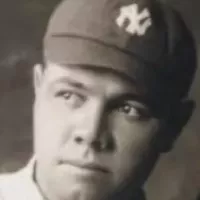
Babe Ruth nicknamed the Bambino and the Sultan of Swat...
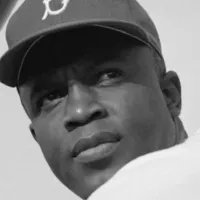
Jackie Robinson was an American professional baseball player who broke...

San Francisco is a major commercial financial and cultural hub...
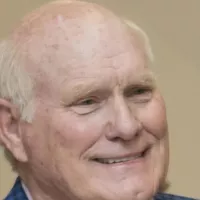
Terry Bradshaw is a former NFL quarterback who played for...
The National Broadcasting Company NBC is a major American commercial...
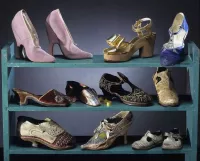
A shoe is a protective and comfort-providing item of footwear...
Trending
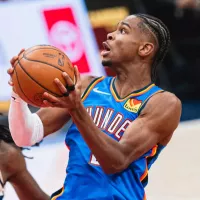
2 months ago Shai Gilgeous-Alexander featured in Netflix's 'Starting 5', alongside Haliburton and NBA stories.
21 days ago Brandon Aubrey: Week 14 Fantasy Football Kicker Rankings and Start/Sit Recommendations
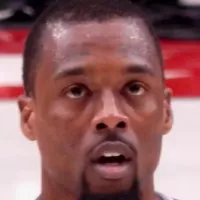
23 days ago Spurs Defeat Nuggets in Thrilling Game, Mavericks Face Nuggets
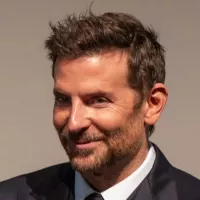
1 month ago Bradley Cooper directs Will Arnett and Laura Dern in the dramedy 'Is This Thing On?'
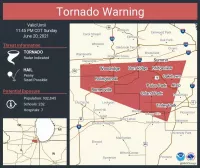
2 months ago Tornado Warning Issued for Terrebonne and Lafourche Parishes, Severe Weather Hits Houston
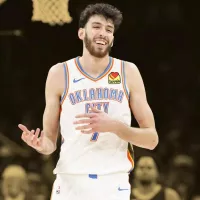
23 days ago Chet Holmgren's Champion Comeback: Avoiding Hangover, Praised by Shai Gilgeous-Alexander, Potential Comparisons
Popular

Ben Shapiro is a prominent American conservative political commentator media...

XXXTentacion born Jahseh Dwayne Ricardo Onfroy was a controversial yet...

Candace Owens is an American conservative political commentator and author...

William Franklin Graham III commonly known as Franklin Graham is...
The Kennedy Center Honors are annual awards recognizing individuals and...

Tucker Carlson is an American conservative political commentator known for...